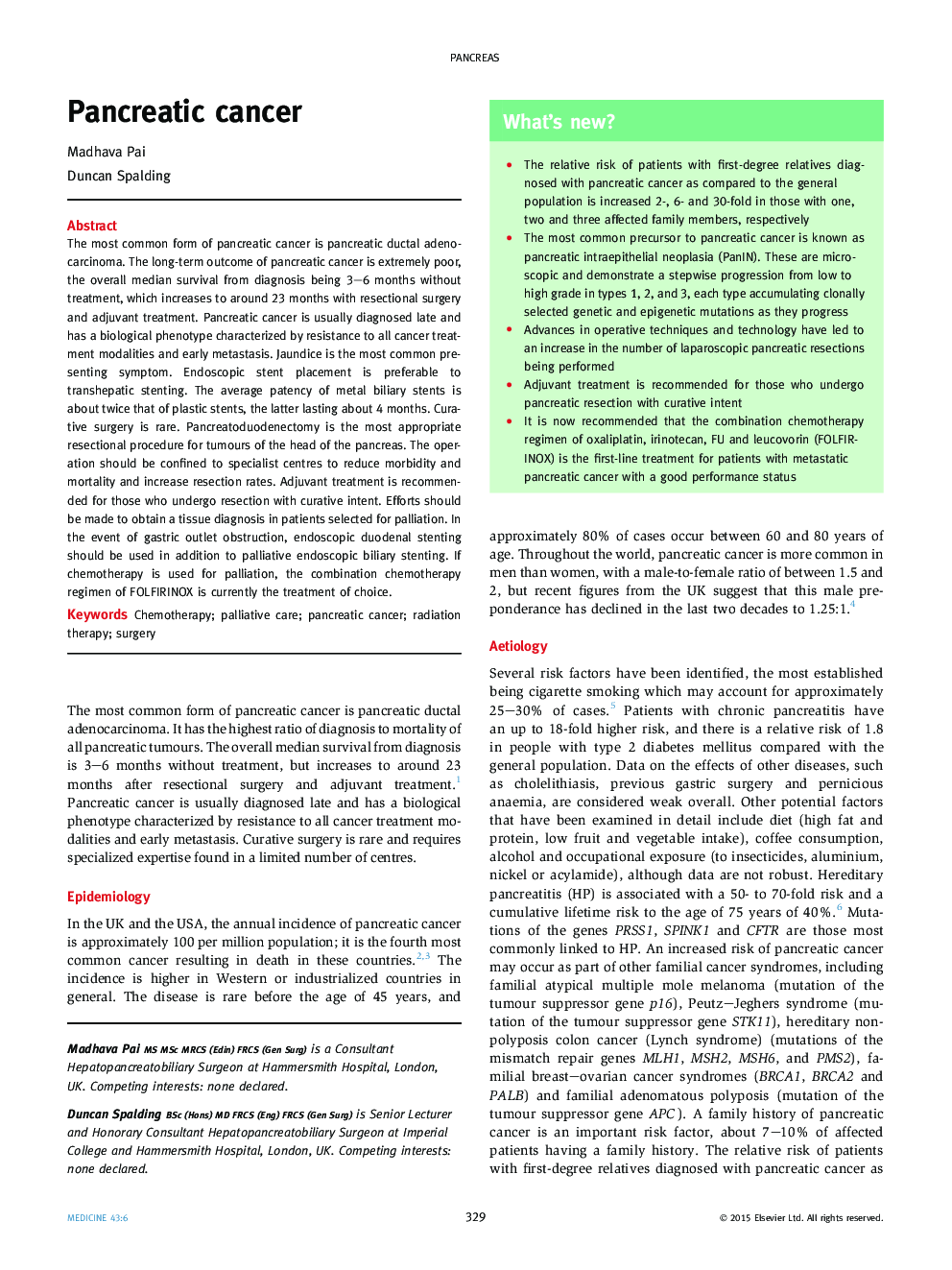| Article ID | Journal | Published Year | Pages | File Type |
|---|---|---|---|---|
| 3806725 | Medicine | 2015 | 5 Pages |
The most common form of pancreatic cancer is pancreatic ductal adenocarcinoma. The long-term outcome of pancreatic cancer is extremely poor, the overall median survival from diagnosis being 3–6 months without treatment, which increases to around 23 months with resectional surgery and adjuvant treatment. Pancreatic cancer is usually diagnosed late and has a biological phenotype characterized by resistance to all cancer treatment modalities and early metastasis. Jaundice is the most common presenting symptom. Endoscopic stent placement is preferable to transhepatic stenting. The average patency of metal biliary stents is about twice that of plastic stents, the latter lasting about 4 months. Curative surgery is rare. Pancreatoduodenectomy is the most appropriate resectional procedure for tumours of the head of the pancreas. The operation should be confined to specialist centres to reduce morbidity and mortality and increase resection rates. Adjuvant treatment is recommended for those who undergo resection with curative intent. Efforts should be made to obtain a tissue diagnosis in patients selected for palliation. In the event of gastric outlet obstruction, endoscopic duodenal stenting should be used in addition to palliative endoscopic biliary stenting. If chemotherapy is used for palliation, the combination chemotherapy regimen of FOLFIRINOX is currently the treatment of choice.
